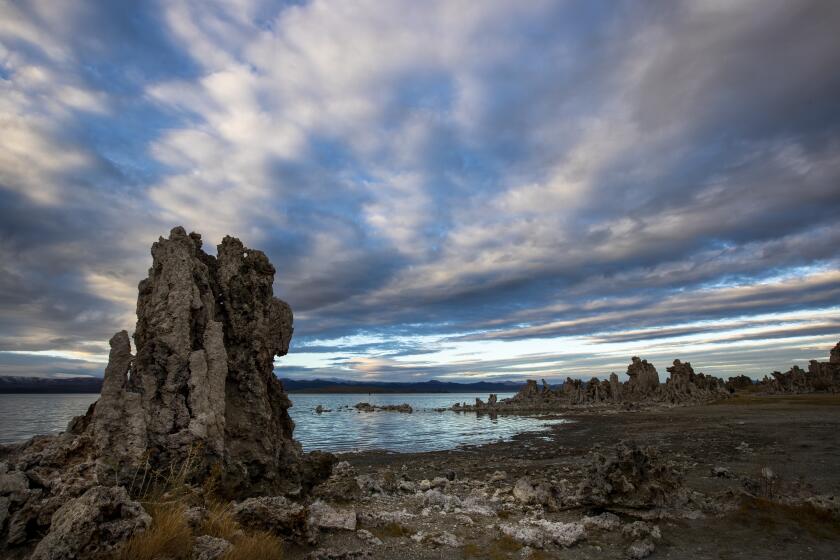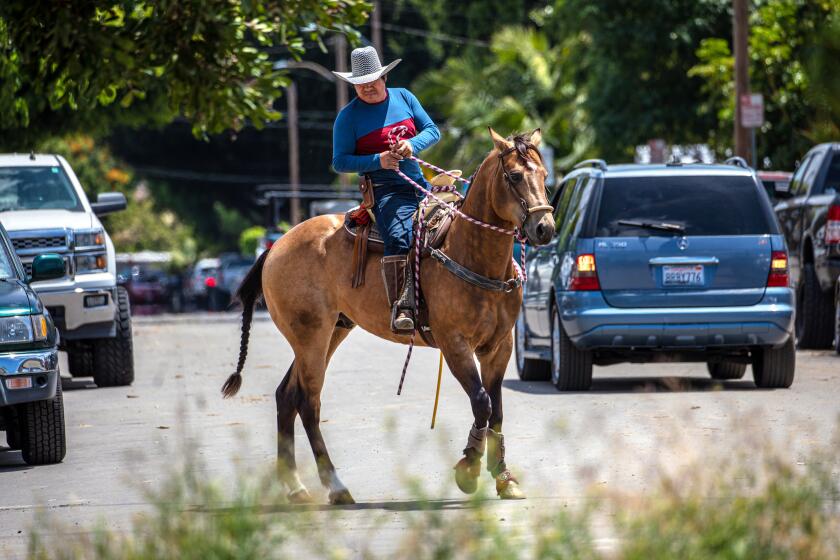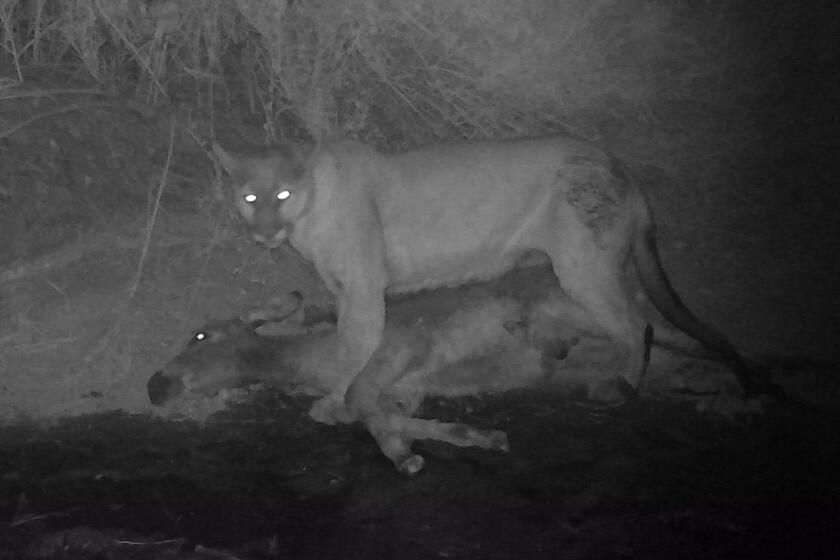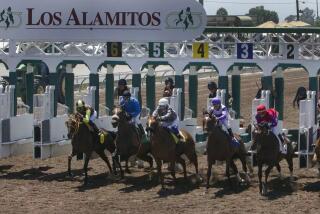Wild horses spent the harsh winter at Mono Lake. Now they’re turning up dead
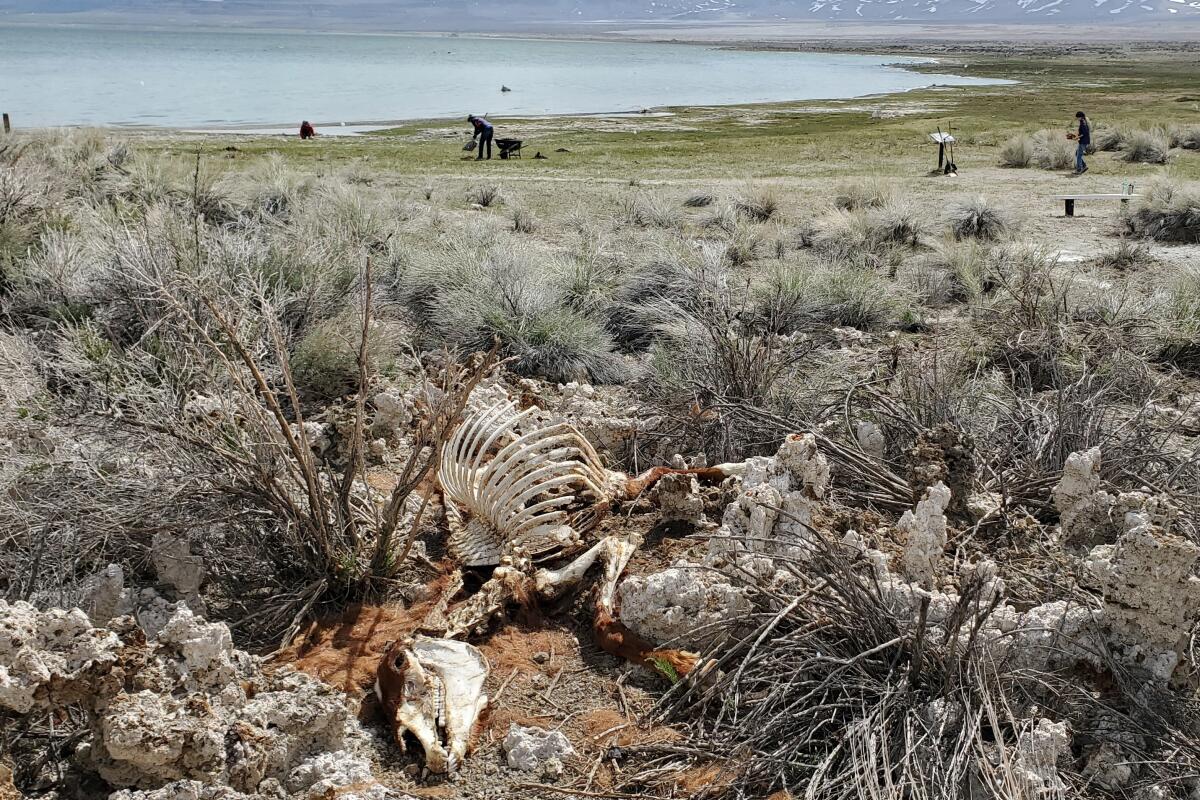
- Share via
Several wild horse carcasses have been discovered this spring on the southwestern shores of Mono Lake, after California endured a cold and snowy winter.
As multiple feet of snow finally melted around one of Mono County’s greatest attractions, U.S. Forest Service officials and volunteers found remnants of a large presence of wild horses — ones that typically range much farther east — that wintered around Mono Lake and left behind massive amounts of manure, ecological damage and in some cases, decaying skeletons.
“Visitors should be prepared to come across horse carcasses and manure,” Inyo National Forest officials posted on Facebook last week. “There have been reports of several horse carcasses around the South Tufa and Navy Beach areas of the lake, and this may increase in areas where the wild horses have roamed over the winter season.”
The Forest Service said the horse deaths were probably linked to the long, cold winter, but it noted that an official cause of death hadn’t been determined.
“Land managers are not particularly concerned [by these deaths], as this was somewhat of an expected outcome from the long and harsh winter we’ve had, along with the fact that this horse herd had grown so large in size,” Lisa Cox, a spokesperson for the Inyo National Forest, said in a statement. “This has been and will be the case for many other wildlife species in this area.”
For decades, the Los Angeles Department of Water and Power has relied on long-standing water rights to divert from the streams that feed Mono Lake.
It’s also not clear how many horses were found dead.
But some Mono Lake ecologists and volunteers worry the deaths, massive amounts of manure and disrupted habitat are the latest signs of a growing problem as more wild horses keep migrating into the Mono Lake Basin.
“Nearly every square meter of trail at South Tufa and Navy Beach was covered in manure, and manure piles blocked handicap access along the boardwalk from the parking lot to the lake,” according to an online post Thursday by the Mono Lake Committee, a nonprofit that works to protect the lake and its habitats. “Several horses died at South Tufa over the winter and their scavenged carcasses were draped between tufa towers and along the lakeshore.”
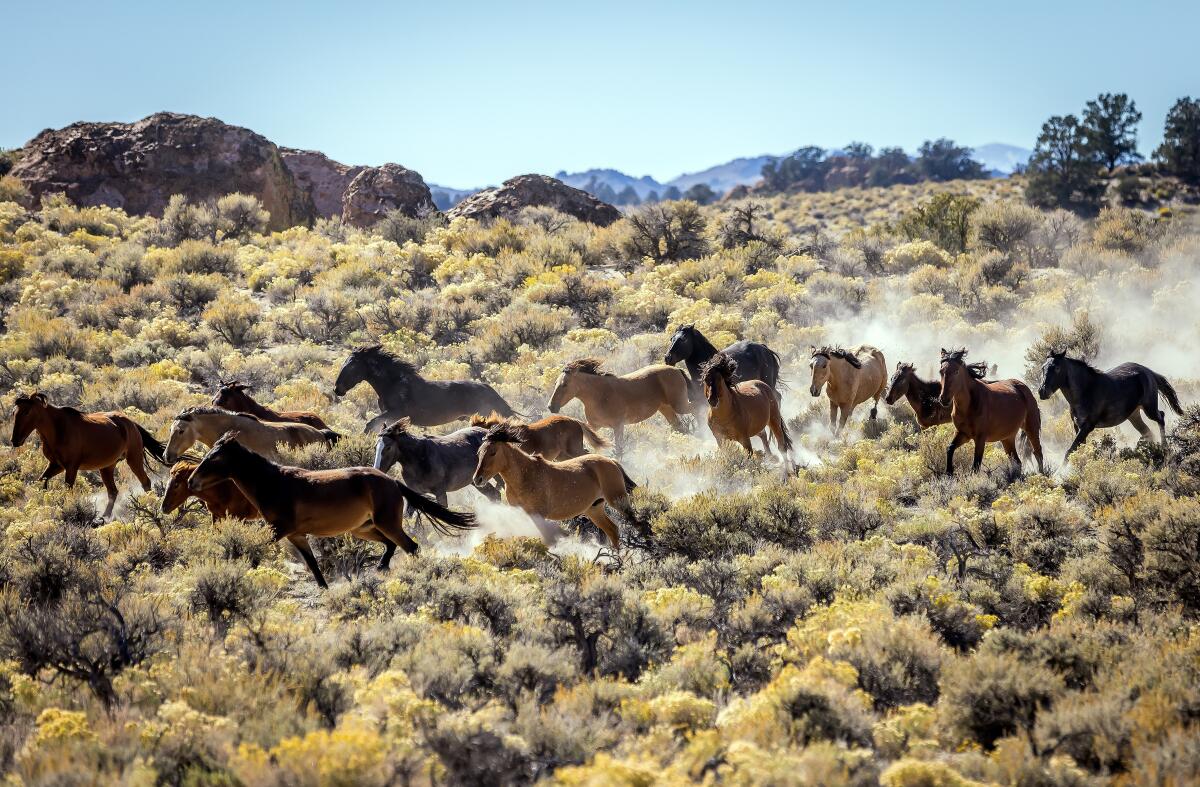
Bartshe Miller, the committee’s Eastern Sierra policy director, said based on anecdotal evidence and game cameras, they estimate there could have been a dozen to 200 horses spending the winter in the area, where springs, wetlands and tufa towers are particularly fragile and easily damaged by the large animals. This region is well beyond the horses’ typical range, which is more than 20 miles east of the lake in a federally designated herd management area surrounding the California-Nevada border, but Miller noted the animals have started moving west in recent years.
Cox said the wild horses cause “negative ecological impacts to the sensitive hydrological resources of Mono Lake.”
“The recent deaths of these horses provide further evidence that the size of this herd cannot be supported by the landscape which they are expanding onto,” Cox said. She said the Forest Service is “exploring options” to update the wild horse management plan — which hasn’t been updated since 1988 — but no changes have been made yet.
They gathered in the horse enclave of Pellissier Village to gripe about code enforcement, which they claim has escalated as the COVID-19 pandemic winds down.
A 2019 report from the U.S. Department of Agriculture recommended the Inyo National Forest work on updating the management plan over the next five years for this herd, known as the Montgomery Pass Herd, but that hasn’t started.
Earlier this month, Inyo National Forest officials and volunteers removed two of the horse carcasses and more than 1,000 pounds of horse manure “to lessen visitor impacts in the main trail areas,” Inyo National Forest officials wrote on social media.
The wild horses, which are federally protected, are part of the Montgomery Pass Herd, for which officials have designated almost 200,000 acres, 70,000 of which are in the Inyo National Forest, according to federal reports.
But the horses started moving west beyond that designated territory and into the Mono Lake Basin in 2015, said Geoff McQuilkin, the Mono Lake Committee’s executive director. Last winter, the horses made it to the western side of the lake, where this year they made their presence even more evident.
“They’ve been generally pushing westward as the population increased,” McQuilkin said. “Based on the amount of manure at the site [this year], they were probably caught there due to the heavy snow.”
Feral donkeys are considered invasive in Death Valley National Park, but new research shows increased predation by mountain lions could help balance the treasured ecosystem.
McQuilkin said the horses were probably attracted to the location because of the availability of some grasses, the lake’s freshwater and, especially so this winter, the absence of human activity, as snow shuttered access to the lake.
A 2020 census conducted by the Forest Service counted approximately 654 horses in the Montgomery Pass Herd, which is three to four times the appropriate management level established in 1988, with 76% of those horses being outside of the established range, Cox said.
“It would be helpful for people, the habitat and the horses if there was a good plan in place, that protected the horses, protected Mono Lake and its habitats, and protected public safety,” said Miller, noting that the horses have started to move close to some roadways as well.
More to Read
Sign up for Essential California
The most important California stories and recommendations in your inbox every morning.
You may occasionally receive promotional content from the Los Angeles Times.
